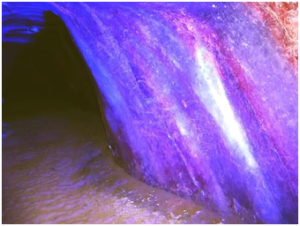250 million years ago during the Jurassic era, insurmountable pressure of the Indo-Australian tectonic plates created the Himalayan Mountains, and to this day it continues to push Tibet upwards at a rate of 2cm a year. The study of these salt deposits has revealed not only their geologic age but also the type of environment and climate in which they formed. Studies indicate that the salt crystals lived under a relatively mild, wet environment about 105 million years ago, when Tibet was closer to the equator.During this time, the scorching sun dried up the primal Tethys Sea and left behind massive Himalayan Salt beds. Simply put, these trace elements and minerals became fossilized and crystallized in the mountain over millions of years and ultimately produced is the most pristine, natural salt the world has ever known.


It’s fascinating to discover that Himalayan crystal salt is identical in composition to the ancient primal ocean which ironically, has a similar composition of our blood; that is a brine solution or fluid consisting of water and salt. Himalayan Salt contains all the elements found in our bodies that occur naturally, for example, iron. Astoundingly, it constitutes 84 trace minerals and elements. No other product in the world can boast this fact and that’s why it was historically known as “King Salt”, “salt of life”, or “white gold”, as it was only reserved for royalty. Alchemists called it “the fifth element”, besides air, water, earth, and fire – because its qualities were comparable only to ether, the actual fifth element.
HIMALAYAN SALT IN ANCIENT TIMES
Since ancient times, salt has been the principal source of income for people living in those remote regions. Because food preserved in salt retains its nutritional properties for several months, Himalayan people use it to keep fish and meat all year long. They also use it as a currency in trading. For centuries, once a year in springtime, the Himalayan people have been transporting the salt to the Nepalese valleys for trade. Heavily burdened yaks carry the salt, travelling along narrow sloping paths, often these paths have been carved in cliffs. Once they have arrived at their destination, the salt is traded for cereals, which is the staple of the diet for these Himalayan Salt traders. It is easy to understand why salt has always been so precious for mankind.














































































